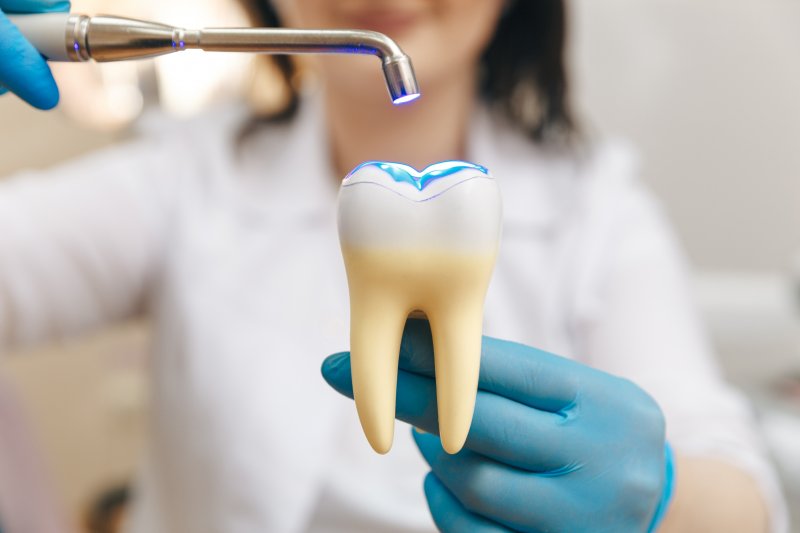Filling You In: How Long Do Dental Fillings Last?
September 5, 2022

Did you know dental fillings are most likely the oldest form of dentistry? Filling cavities can be dated as far back as 6,500 years. We have come a long way from using beeswax to restore a tooth! Now modern fillings use more durable, reliable materials. But the length of time they last are dependent on the exact kind used. Whether you already have fillings or are about to get one, here is all you need to know from your dentist in Edison about the different types of fillings, their lifespan, and what you can do to make them last for your healthy smile.
What are Fillings Made from and How Long Do They Last?
There are several kinds of material that a filling can be made from, and the lifespan varies for each:
- Composite fillings – These are made from a mixture of ceramic resin and acrylic. They match the color of the natural tooth and last seven to 10 years.
- Amalgam (silver) fillings – Made from a mixture of silver, copper, and tin alloy particles, these fillings may also contain elemental mercury and tend to last six to 15 years.
- Gold fillings – These cost more than amalgam or composite and usually last 20 years or more.
- Ceramic fillings – Lasting 15 years or longer, ceramic fillings are made from porcelain and are even more expensive than gold.
- Glass ionomer fillings – Made from glass and acrylic, these fillings are weaker than other fillings and typically last only about 5 years.
How Can I Extend the Life of My Filling?
While your existing filling won’t last forever, there are things you can do to extend its lifespan and get the most out of your investment, such as:
- Adopt healthy oral habits – Brushing your teeth twice a day, flossing regularly, and rinsing with mouthwash are the habits of dental champions! By eliminating bad bacteria, you decrease the risk of decay or infections that can affect your natural teeth and dental filling.
- Wear a mouthguard – If you are prone to bruxism (teeth grinding) at night, consider getting a customized nightguard from your dentist. It will help to keep your upper and lower arches from touching and causing damage to your filling.
- Eat healthy foods – Leafy greens, lean meats, fruits, and vegetables are all healthy food options that will keep your smile looking and feeling its best. Limiting sugar and starch will also decrease your risk of decay.
- Avoid sticky foods – Sticky foods may pull on your fillings. It’s best to avoid foods like jerky, gummy candies, and gum so you don’t put your restoration at risk of getting damaged.
- Maintain regular checkups – Visiting your dentist every six months will allow them to examine the existing filling to ensure it continues to seal the tooth effectively and offer maximum protection.
Regardless of the type, today’s fillings are excellent in repairing and restoring our natural teeth. Knowing how long yours lasts will help you care for it and keep your smile healthy for years!
About the Author
Dr. Rosenfeld provides comprehensive treatment through his passion for combining cosmetic, implant, and restorative dentistry. He graduated from the Columbia University School of Dental and Oral Surgery in New York City and has completed advanced training in the fields of cosmetic dentistry, oral pathology, and pediatric dentistry. If you need a filling or have one that needs to be repaired or replaced, contact Rosenfeld Dental Associates through their website or by calling (908) 668-7838. You can also text (908) 402-0949.
No Comments
No comments yet.
RSS feed for comments on this post.
Sorry, the comment form is closed at this time.

